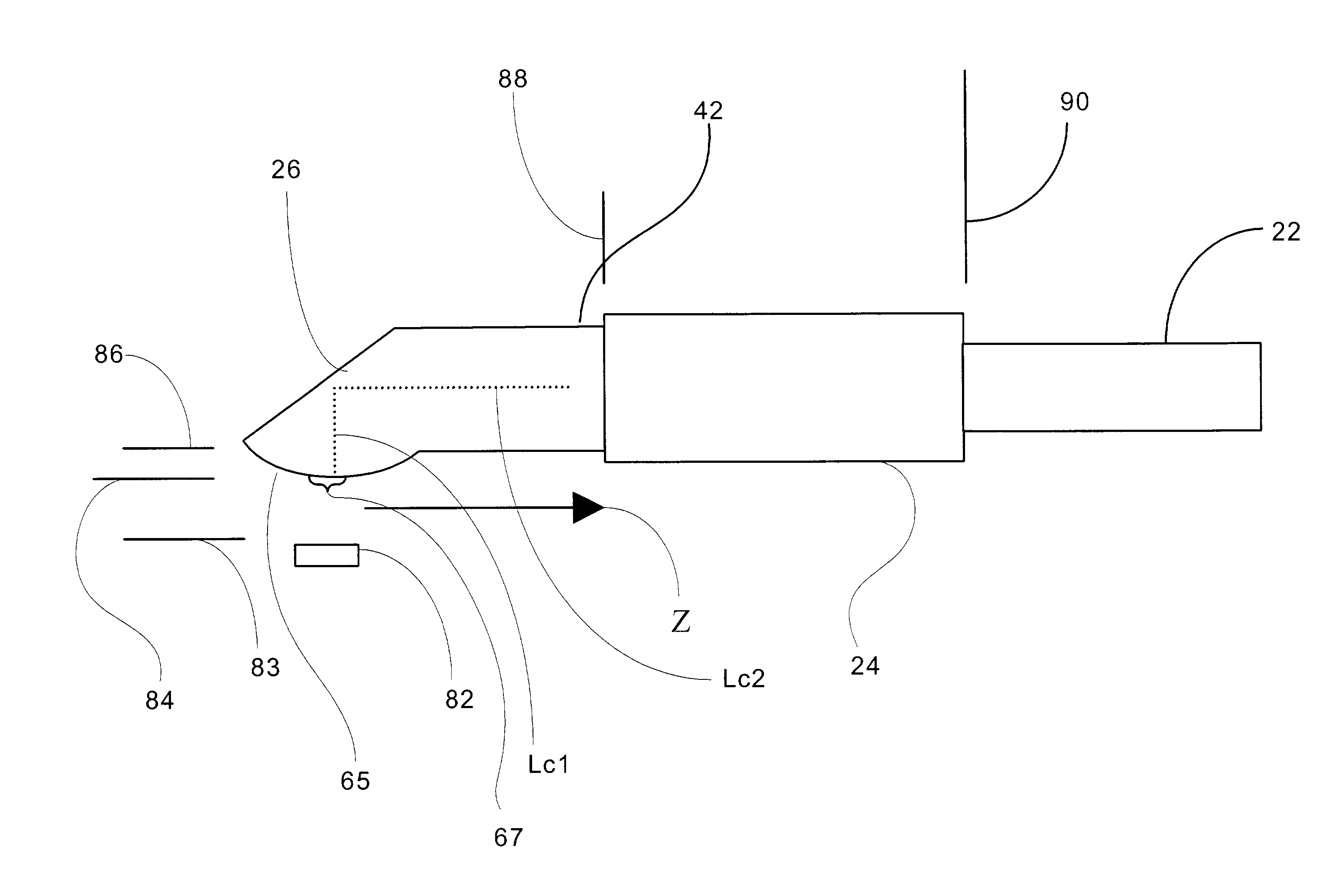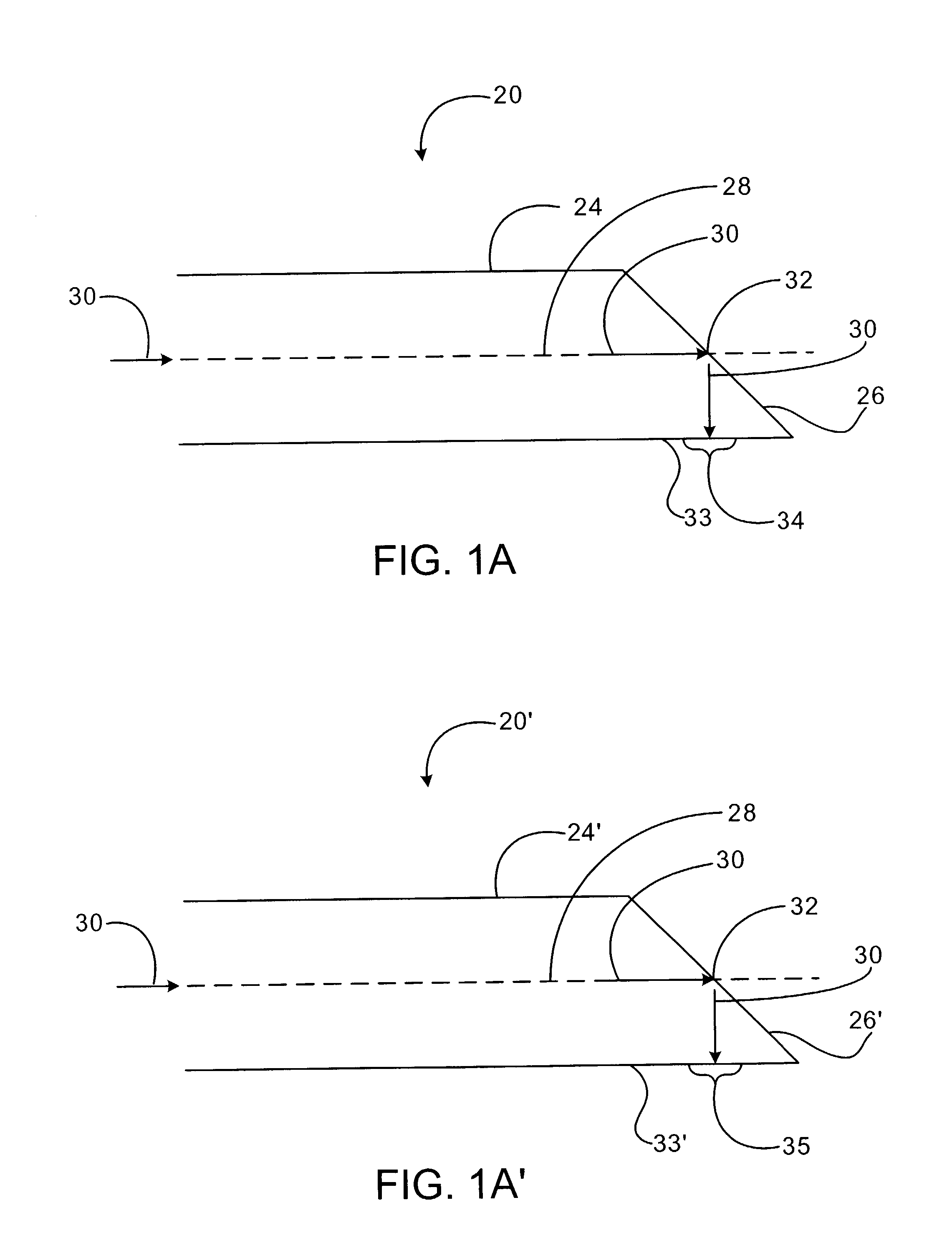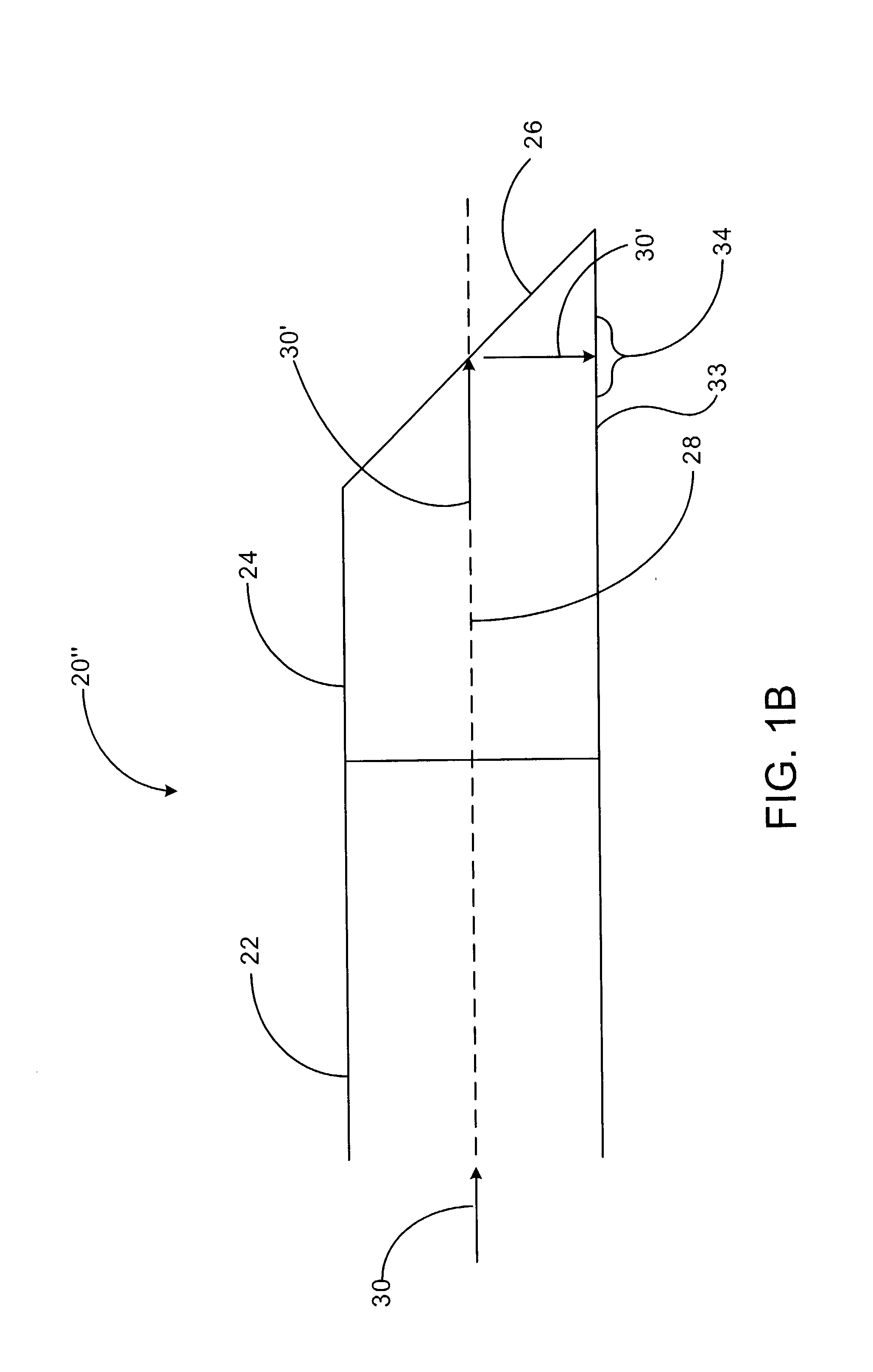[0017] The beam bending apparatus of the present invention results in a number of advantages over other mode-transforming devices known in the art. In one respect, since a mode-transforming lens may be formed directly on a GRIN-fiber lens, the geometric shape and / or size of the mode field of an optical signal may be altered by the mode-transforming lens, while the focusing of the altered optical signal may be largely performed by the GRIN-fiber lens. As a result, the
wavefront of the optical signal may be better matched to that of the optical component or other
waveguide to which the optical signal is coupled. Accordingly, coupling losses are minimized and phasefront aberrations are reduced. The beam bending apparatus of the present invention may also be designed to provide for a greater range of operative working distances. As a result of these and other advantages, coupling efficiencies are greatly improved.
[0018] In addition to these advantages, the GRIN-fiber lens itself provides a number of advantages in the manufacture of the present invention. As mentioned hereinabove, GRIN-fiber lenses are preferably
high silica containing structures preferably made by conventional multi-mode fiber manufacturing processes. Because GRIN-fiber lenses are made by telecommunication fiber manufacturing techniques, GRIN-fiber lenses manufactured in accordance with the present invention may be drawn to the desired dimensions with a high degree of accuracy. Generally speaking, GRIN-fiber lenses may be drawn having an outside
diameter ranging from about 25.0 microns to about 1000.0 microns. More preferably, such GRIN-fiber lenses may be drawn such that they have outside diameters
ranging from about 50.0 microns to about 500.0 microns. More preferably such GRIN-fiber lenses may have an outside
diameter of between about 75.0 microns to about 250.0 microns. In addition, since GRIN-fiber lenses may be drawn using traditional
fiber drawing equipment, large
diameter rods or blanks may be manufactured and thereafter drawn to long lengths (up to several kilometers) of fiber while maintaining the material properties, such as, but not limited to, the core to clad ratio of the original large diameter rod, thus making manufacturing and splicing easier. Accordingly, the desired
refractive index profile, among other characteristics, of the GRIN-fiber lens may be designed into the larger rod or blank which provides for precision submicron control over the resulting GRIN- fiber lens optical properties.
[0019] In addition to these advantages, GRIN-fiber lenses may be fabricated in accordance with the present invention such that they have the predetermined material characteristics for more than one mode-transforming application. Since a mode-transforming lens may be formed on the GRIN-fiber lens or on a coreless spacer rod or fiber affixed to the GRIN-fiber lens, rather than the
pigtail fiber itself, GRIN-fiber lenses and coreless spacer rods having the same length, formed of the same materials, having the same aspect ratios, and having the same cross-sectional areas may be affixed to
pigtail fibers having different characteristics and / or mode fields. Thereafter, each GRIN-fiber lens and / or coreless rod may be altered, by cleaving to the appropriate length, for example, to provide the required mode field transforming functionality required for the particular fiber
pigtail to which each GRIN-fiber lens and / or spacer rod is affixed. As will be described in greater detail, this may preferably be accomplished by cleaving or otherwise
cutting each GRIN-fiber lens and / or spacer rod to the desired length and configuring the
cut end of each GRIN- fiber lens and / or rod to have the desired optical signal altering properties.
[0022] The beam bending apparatus of the present invention provides additional advantages for optical assemblies and other packaging arrangements. The beam bending apparatus of the present invention provides for working distances as large as about twenty (20.0) microns or more, which is significantly larger than working distances provided by anamorphic and other mode-transforming apparatus known in the art. As a result, coupling to a
laser diode or other
semiconductor device with low loss is facilitated due in part to the relaxed alignment tolerances between the apparatus and the
semiconductor device.
[0023] All of the above-mentioned aspects of the present invention provide for large scale production of GRIN-fiber lenses and / or spacer rods, which in turn facilitates ease of manufacture, reduced costs associated with the manufacturing process, and greater economies of scale. The apparatus of the present invention may be constructed such that the mode field of an optical signal passing therethrough may be changed from an elliptical mode field to a circular mode field, from a circular mode field to an elliptical mode field, from a mode field having one ellipticity to a mode field having a different ellipticity, or from one mode field to another mode field having the same shape but a different size. Moreover, the apparatus of the present invention may be designed such that it may alter the mode field of an optical signal passing therethrough, in either direction.
[0024] Additional features and advantages of the invention will be set forth in the detailed description which follows and in part will be readily apparent to those skilled in the art from that description or recognized by practicing the invention as described herein.
 Login to View More
Login to View More  Login to View More
Login to View More 


